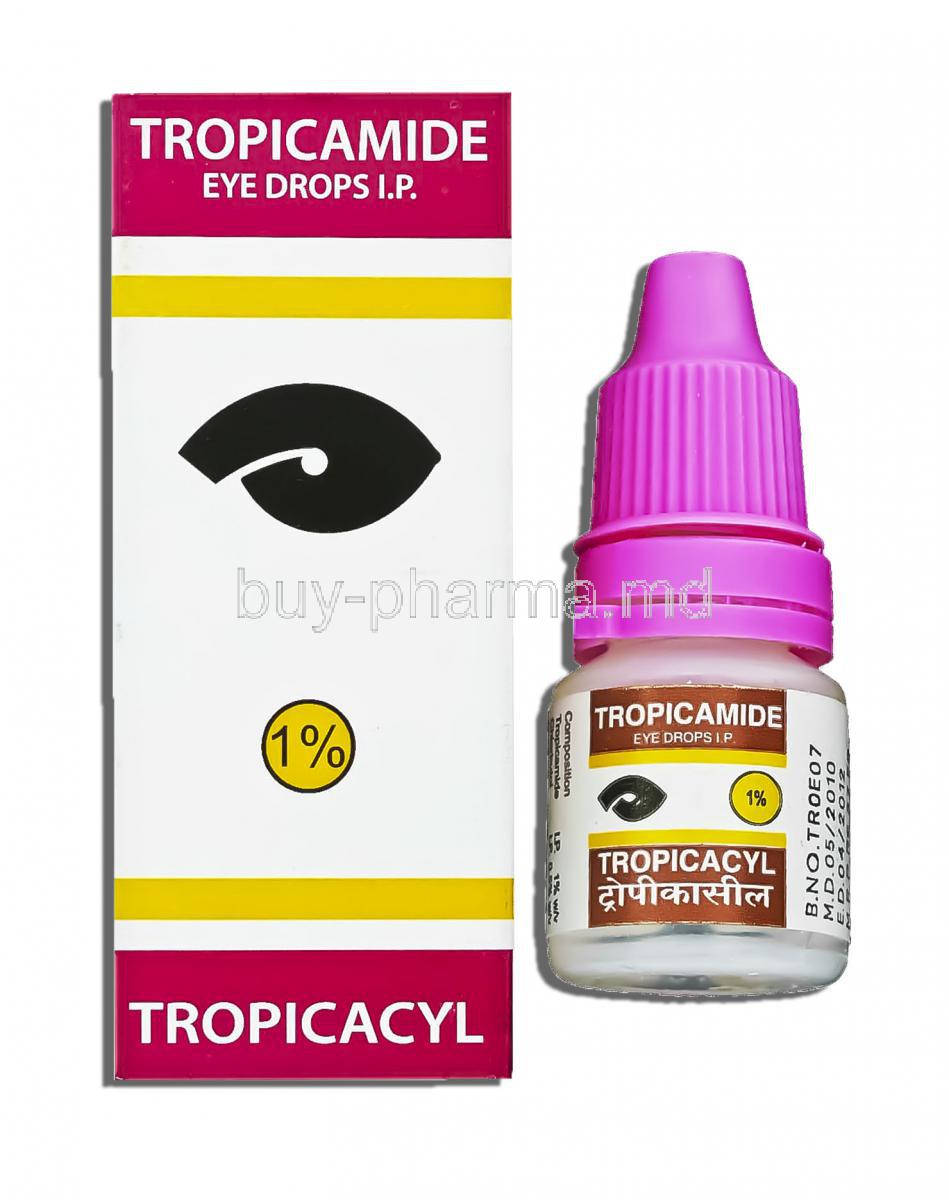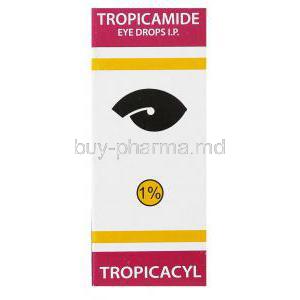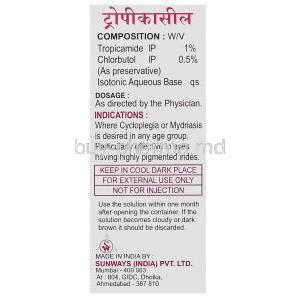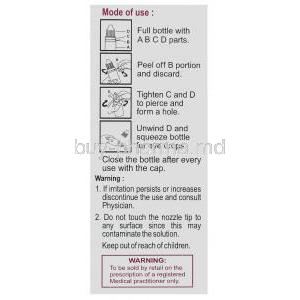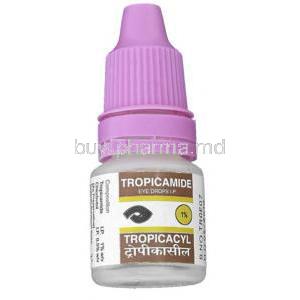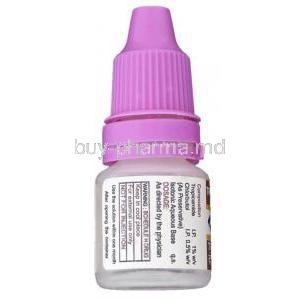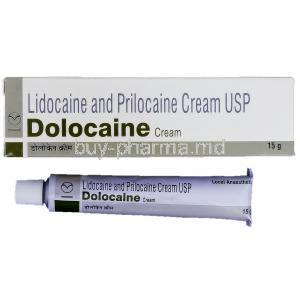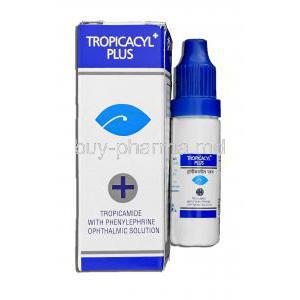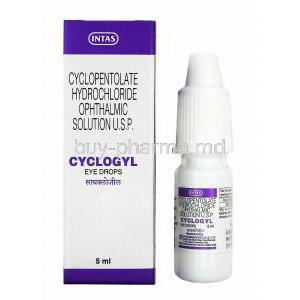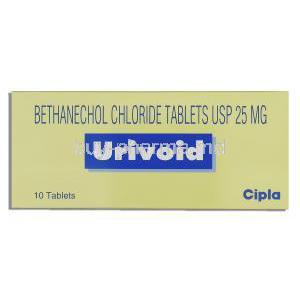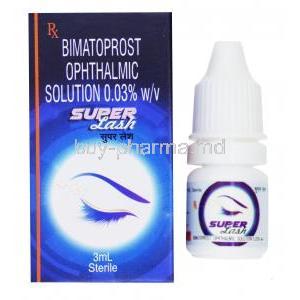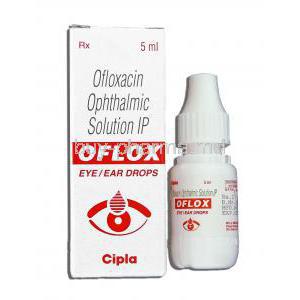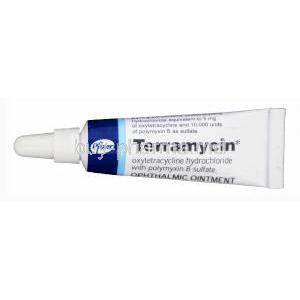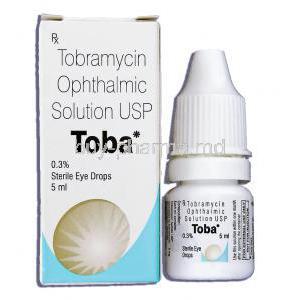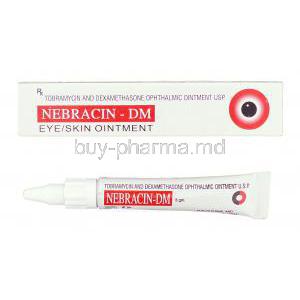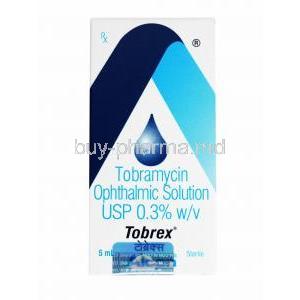Introduction to Tropicacyl Eye Drops
Overview of Tropicacyl (Tropicamide)
Tropicacyl, containing the active compound tropicamide, is a fast-acting ophthalmic solution widely employed in clinical practice. It belongs to a class of medications known as antimuscarinic mydriatics, specifically formulated to dilate the pupil and temporarily paralyze accommodation of the lens. Its precision and rapid onset make it indispensable in modern ophthalmology.
History and Development of Mydriatic Eye Drops
The evolution of mydriatic agents dates back to natural alkaloids such as atropine. While effective, these early compounds induced prolonged dilation, often causing discomfort. Tropicamide was developed as a safer, shorter-acting alternative, revolutionizing diagnostic and surgical eye care by allowing reversible dilation with minimal systemic impact.
Importance in Ophthalmology and Optometry
Pupil dilation is fundamental for detailed retinal evaluation. Tropicacyl enables clinicians to detect:
- Retinal tears and detachment
- Macular degeneration
- Diabetic retinopathy
- Other posterior segment disorders
Its role is equally vital in optometry, facilitating accurate refraction and prescription of corrective lenses.
Tropicacyl Eye drops Composition and Formulation
Active Ingredient: Tropicamide
The therapeutic action stems from tropicamide, an antimuscarinic agent that selectively blocks acetylcholine at muscarinic receptors in the eye.
Tropicacyl drug classification
Tropicamide is a member of acetamides. Tropicamide is an alkaloid atropine‐derived anticholinergic drug and a non‐selective antagonist of muscarinic acetylcholine (mACh) receptors.
Available Concentrations
Tropicacyl is commonly supplied in 0.5% and 1% ophthalmic solutions. The concentration chosen depends on the required degree of mydriasis and cycloplegia.
Inactive Ingredients and Preservatives
Stabilizing agents and preservatives ensure sterility and enhance shelf life. Benzalkonium chloride is often present as a preservative, requiring caution in patients using soft contact lenses.
Pharmaceutical Class
Tropicamide belongs to the pharmacological class of antimuscarinic and mydriatic agents, characterized by their ability to induce rapid, controlled dilation of the pupil.
Tropicamide and phenylephrine
Phenylephrine is a sympathomimetic agent, while tropicamide is an anticholinergic agent. Tropicamide and phenylephrine combination eye spray is used to dilate (enlarge) the pupil of the eye during certain medical procedures
Paremyd vs Tropicamide
Paremyd and tropicamide are both used to dilate the pupils for eye exams, but they differ in their composition and effects. Paremyd is a combination of hydroxyamphetamine and tropicamide, while tropicamide is a standalone anticholinergic drug. Paremyd generally provides faster recovery of pupil size and accommodation after dilation compared to a combination of phenylephrine and tropicamide. Tropicamide is often used in lower concentrations and may be preferred for its shorter duration of action, especially in patients with certain conditions.
Tropicamide Mechanism of Action
Action on Muscarinic Receptors in the Eye
Tropicamide antagonizes muscarinic acetylcholine receptors within the sphincter pupillae and ciliary muscle, thereby reducing their responsiveness.
Inducing Pupil Dilation (Mydriasis)
The blockade of muscarinic receptors relaxes the sphincter muscle, allowing unopposed sympathetic stimulation of the dilator pupillae muscle and resulting in pupil enlargement.
Temporary Paralysis of Accommodation (Cycloplegia)
By inhibiting the ciliary muscle, tropicamide prevents the eye from focusing on near objects, a condition termed cycloplegia. This is particularly useful in refraction testing.
Onset of Action and Duration of Effect
The onset of pupil dilation typically occurs within 15–20 minutes, with effects lasting 4–6 hours. This short duration makes tropicamide preferable to longer-acting mydriatics.
Tropicamide half life
Tropicamide's plasma half-life is 30 minutes. It is a short-acting anticholinergic drug used to dilate the pupil (mydriasis) for diagnostic purposes, with effects typically lasting 4-8 hours,
Tropicamide Eye Drops Uses
Routine Eye Examination
Tropicacyl is routinely used to dilate pupils for comprehensive retinal examination during eye check-ups.
Pre-Operative and Intra-Operative Use
It aids in maintaining adequate mydriasis during cataract extraction and other ocular surgeries, improving surgical visibility.
Diagnostic Procedures
Its cycloplegic action assists in accurate refraction measurements, especially in children and patients with accommodative disorders.
Use in Retinal Evaluation
Tropicamide facilitates detailed visualization of the macula, optic nerve head, and peripheral retina, crucial in diagnosing sight-threatening diseases.
Off-Label Uses of Tropicamide
Management of Uveitis
By dilating the pupil, tropicamide reduces ciliary muscle spasm, alleviates pain, and prevents posterior synechiae formation in patients with anterior uveitis.
Combination Therapy in Diagnostics
It is frequently combined with sympathomimetics such as phenylephrine to enhance dilation for advanced ophthalmic procedures.
Neurological Pupil Testing
Neurologists may utilize tropicamide in specialized testing to evaluate parasympathetic innervation of the pupil.
Veterinary Applications
Its controlled mydriatic effect extends to veterinary ophthalmology, where it is used in small animals for eye examinations and treatments.
Dosage and Administration
Tropicamide Eye drops Dosage
One drop of 0.5% or 1% solution instilled into the conjunctival sac, repeated after 5 minutes if required.
Dosage Guidelines for Children
Lower concentrations or reduced dosing are recommended due to heightened susceptibility to systemic absorption and side effects.
Technique for Administering Eye Drops
Proper instillation includes tilting the head back, pulling down the lower eyelid, and avoiding contamination of the dropper tip.
Frequency and Repeat Dosing
Dosing frequency depends on the diagnostic or surgical need. Repeat administration is typically not required within the same visit.
Duration of Effect and Timing
The dilation is sufficient for most examinations and wears off within hours, minimizing disruption to daily activities.
Warnings and Precautions
Lowest Effective Dose
Using the minimal dose necessary reduces the risk of systemic anticholinergic side effects.
Risk of Systemic Absorption
Nasolacrimal occlusion is recommended after instillation to limit systemic absorption through the nasopharyngeal mucosa.
Precautions in Cardiovascular Patients
Patients with hypertension or ischemic heart disease should be monitored due to possible systemic effects.
Avoidance in Narrow-Angle Glaucoma
Mydriasis can precipitate acute angle-closure glaucoma; use is contraindicated without ophthalmic supervision.
Driving and Operating Machinery
Blurred vision and light sensitivity may impair performance; patients should avoid driving until visual clarity returns.
Tropicamide Contraindications
Hypersensitivity Reactions
Contraindicated in patients with known allergy to tropicamide or other formulation components.
Narrow-Angle Glaucoma
Risk of acute angle-closure necessitates avoidance in such patients.
Severe Ocular Infections
Mydriasis may complicate intraocular infections; thus, use is contraindicated in untreated severe ocular infections.
Careful Administration and Important Precautions
Hypertension and Cardiovascular Disease
In patients with elevated blood pressure or heart disease, tropicamide should be administered under close monitoring.
Hepatic and Renal Impairment
Dose adjustments or careful monitoring may be necessary in patients with compromised liver or kidney function.
Down’s Syndrome or Brain Damage
Increased sensitivity to anticholinergic effects has been reported; clinicians should proceed with caution.
Concurrent Anticholinergic Medications
Potential additive effects may occur when combined with other anticholinergics, raising the risk of systemic side effects.
Administration in Special Populations
Use in Elderly Patients
Elderly individuals often demonstrate heightened susceptibility to systemic anticholinergic reactions due to altered pharmacodynamics. Even minimal absorption of tropicamide may lead to pronounced side effects.
- Confusion, disorientation, or delirium may manifest more readily.
- Visual hallucinations and heightened agitation are potential adverse outcomes.
- Dry mouth and impaired salivary flow contribute to reduced oral comfort and increased risk of dental complications.
Careful observation, minimal effective dosing, and supportive monitoring strategies are strongly recommended in this population.
Use in Pregnant Women
The safety profile of tropicamide during pregnancy remains incompletely established. Available data are limited and do not conclusively define risk to the developing fetus.
- Potential risks should be weighed against the clinical necessity of inducing mydriasis.
- Use is generally reserved for situations where diagnostic benefits outweigh potential harm.
- Healthcare providers should exercise caution due to limited human studies.
Given the absence of robust data, tropicamide should be administered during pregnancy only when strictly essential and under specialist supervision.
Use in Nursing Mothers
Tropicamide may be excreted in breast milk in small amounts, raising potential safety concerns for infants.
- Adverse anticholinergic effects in breastfed infants, though rare, cannot be excluded.
- Breastfeeding women should be advised to exercise caution when undergoing ocular dilation.
- Temporary interruption of breastfeeding may be considered if repeated dosing is necessary.
Clinical judgment is required to balance maternal diagnostic needs with infant safety.
Use in Children and Infants
Pediatric patients, particularly neonates and infants, exhibit increased vulnerability to systemic absorption and toxicity.
- Dosing must be carefully adjusted to minimize exposure.
- Signs of toxicity include restlessness, unusual drowsiness, and facial flushing.
- Close monitoring for adverse reactions is imperative in all pediatric cases.
Healthcare providers are encouraged to apply nasolacrimal occlusion after administration to reduce systemic absorption.
Tropicamide Side Effects
Ocular Side Effects
Common ocular manifestations include temporary stinging or burning at the site of instillation. Blurred vision and light sensitivity (photophobia) are frequently reported as the pupil dilates.
Systemic Anticholinergic Side Effects
Systemic absorption may give rise to broader anticholinergic reactions, such as:
- Dry mouth and reduced salivation
- Facial flushing and mild tachycardia
- Confusion, agitation, or mild cognitive disturbances
Rare but Serious Reactions
Although uncommon, serious adverse events may occur:
- Allergic hypersensitivity with ocular redness or swelling
- Cardiovascular effects such as irregular heart rhythm
- Acute angle-closure glaucoma in predisposed individuals
Common Side Effects
Most patients experience mild, transient reactions that resolve without intervention:
- Temporary blurred vision
- Eye irritation or burning sensation
- Heightened sensitivity to light (photophobia)
- Dry mouth or occasional mild dizziness
Tropicamide Interactions
Interaction with Other Anticholinergic Medications
Concurrent administration with other anticholinergics can amplify systemic effects, increasing the likelihood of confusion or dry mouth.
Potentiation of Cardiovascular Side Effects
When combined with sympathomimetics such as phenylephrine, tropicamide may potentiate cardiovascular responses, necessitating caution in susceptible individuals.
Impact on Intraocular Pressure-Lowering Drugs
Mydriasis may diminish the efficacy of certain glaucoma therapies, complicating intraocular pressure control.
Interaction with Tricyclic Antidepressants
Additive anticholinergic effects may occur with tricyclic antidepressants, intensifying systemic side effects.
Overdose and Emergency Management
Signs of Ocular Overdose
Excessive dilation, blurred vision, and prolonged photophobia are indicators of localized overdose.
Systemic Overdose Symptoms
Systemic absorption in high amounts may provoke:
- Hallucinations or pronounced agitation
- Tachycardia and flushing
- Seizures in severe cases
Emergency Management and Supportive Care
Treatment is largely supportive, aimed at controlling symptoms and stabilizing the patient.
Activated Charcoal and Gastric Lavage
If ingestion occurs, activated charcoal and gastric lavage may be considered under medical supervision.
Handling and Storage
Proper Storage Conditions
Tropicacyl should be stored at room temperature, protected from excessive light and heat. Freezing must be avoided to preserve solution stability.
Shelf Life and Stability After Opening
Once opened, the dropper bottle should be used within the recommended timeframe, typically 28 days, to maintain sterility.
Safe Handling
To prevent contamination, the dropper tip must not touch the eye, eyelids, or any other surface.
Disposal
Expired or unused medication should be discarded safely in accordance with local pharmaceutical disposal guidelines.
Handling Precautions for Healthcare Professionals
Avoiding Contamination During Examinations
Clinicians should ensure sterile application techniques during ocular evaluations to prevent cross-contamination between patients.
Protective Use in Clinical Settings
Protective gloves and hygienic protocols should be observed when handling multiple ophthalmic preparations in busy practice environments.
Patient Education
Patients must be instructed on correct drop instillation, the importance of not sharing bottles, and the need to report adverse reactions promptly.
Tropicacyl Eye Drops, Topicamide FAQ
- What are tropicamide eye drops used for?
- How long does tropicamide dilate your eyes?
- What is tropicacyl eye drops used for?
- Who should not use tropicamide?
- What are the side effects of dilating eye drops?
- Can I buy tropicamide eye drops?
- Is tropicamide an antibiotic?
- How long until eyes recover from dilation?
- Can tropicamide cause glaucoma?
- Does tropicamide need to be refrigerated?
- Does tropicamide increase blood pressure?
- What are the systemic effects of tropicamide eye drops?
- What not to do after eye dilation?
- What are the side effects of tropicacyl plus eye drops?
- How long do Tropicamide eye drops last?
- Can you sleep after eye dilation?
- Does tropicamide increase eye pressure?
- What is Tropicamide used for?
- How long do tropicamide eye drops take to work?
- What are the side effects of Tropicamide?
What are tropicamide eye drops used for?
Tropicamide eye drops is used to dilate the pupil (mydriasis) and paralyze the muscle (cycloplegia) of the eye during certain medical procedures
How long does tropicamide dilate your eyes?
4 to 10 hours
What is tropicacyl eye drops used for?
It is used to treat uveitis and dilate the eyes before an examination.
Who should not use tropicamide?
Infants and young children
What are the side effects of dilating eye drops?
Vision may become blurry, and eye light sensitivity may happen.
Can I buy tropicamide eye drops?
Yes
Is tropicamide an antibiotic?
No
How long until eyes recover from dilation?
between 4 to 24 hours
Can tropicamide cause glaucoma?
Tropicamide can cause a spike in eye pressure, which is a problem for people with glaucoma.
Does tropicamide need to be refrigerated?
No
Does tropicamide increase blood pressure?
No
What are the systemic effects of tropicamide eye drops?
Tropicamide blocks the eye's ability to focus on objects. It does this by affecting the muscle, which controls how our eyes adjust to see things, up close.
What not to do after eye dilation?
Avoid driving and prolonged exposure to bright lights.
What are the side effects of tropicacyl plus eye drops?
- Blurred vision
- Dizziness
- Headache
- Eye pain
- Eye irritation
- Skin rash
How long do Tropicamide eye drops last?
4-6 hours
Can you sleep after eye dilation?
Yes
Does tropicamide increase eye pressure?
Yes
What is Tropicamide used for?
Tropicamide is generally considered a choice for dilating pupils before an eye exam or surgery.
How long do tropicamide eye drops take to work?
10-15 minutes
What are the side effects of Tropicamide?
- Blurred vision
- Dizziness
- Headache
- Eye pain
- Eye irritation
- Skin rash

